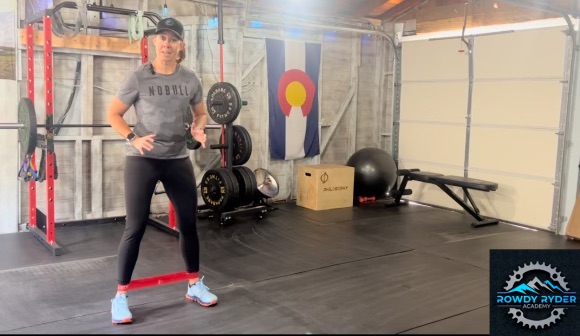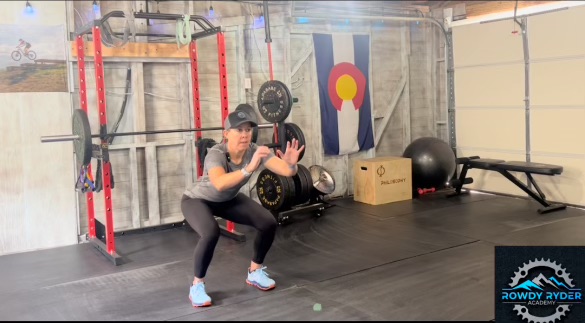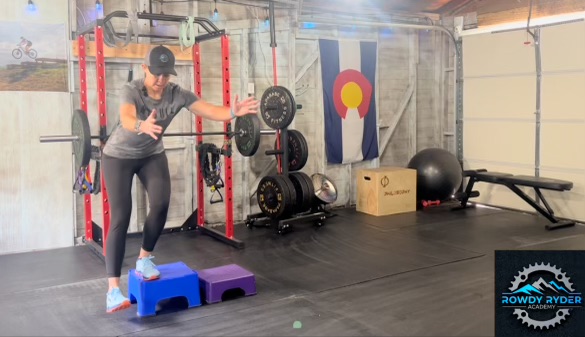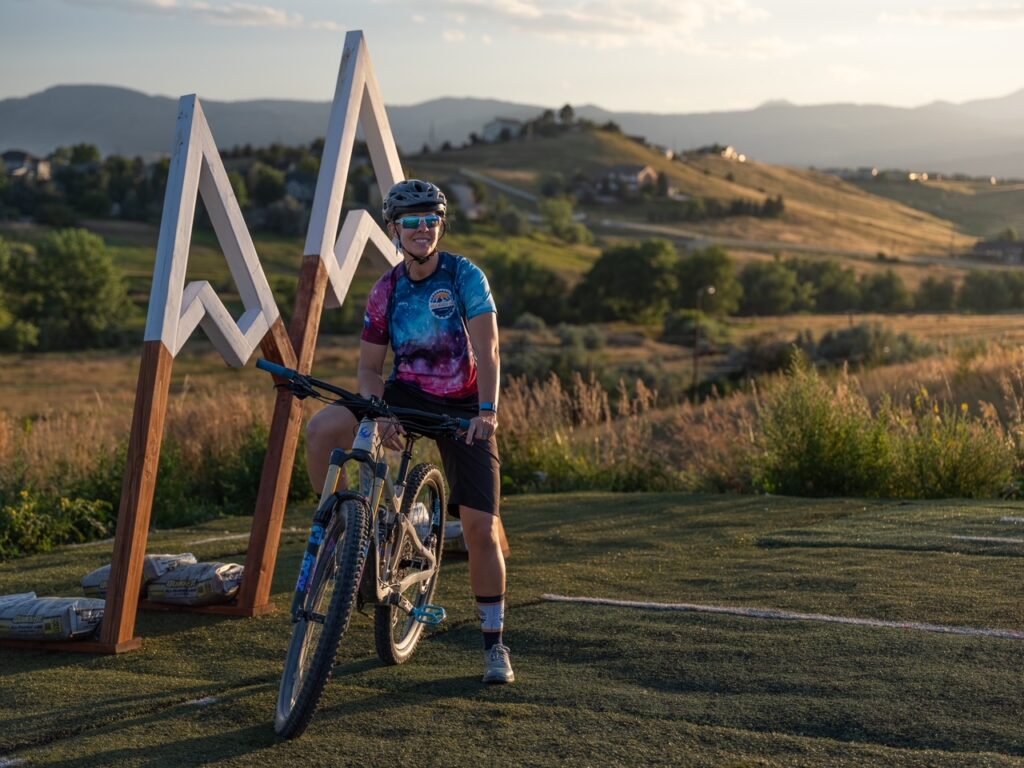Improve Your Leg Endurance for Bike Park Days!
We partnered up with Tina Meinhardt to bring you a few exercises to help you get ready for the Bike Park.
Words By Tina Meinhardt
Are you excited to get back out to the bike parks this summer? Are your legs ready?! If you have struggled during your downhill bike park rides because your legs fatigue after just a few runs, you need to add these exercises to your strength training routine!! This workout is meticulously crafted to target key muscle groups in the legs, providing the strength and stamina necessary to excel in the demanding environment of downhill park riding. By incorporating these exercises into your training regimen, you’ll develop the muscular endurance and resilience needed to tackle the fast and long descents with confidence and control.
Workout #1 Side steps with isometric squat holds
- This exercise is effective for strengthening the glutes, hip abductors, and quadriceps, which are essential for controlling the bike and maintaining stability on challenging downhill terrain. By adding in the isometric squat holds, you’ll build increased endurance that helps in maintaining strong and stable legs over the duration of a downhill run, reducing fatigue and enhancing performance.

Workout #2 Squat jumps
- This exercise primarily targets the quadriceps, hamstrings, glutes, and calves. By performing explosive jumps, riders develop fast-twitch muscle fibers, which are crucial for generating powerful bursts of speed and handling sudden changes in terrain on a downhill course. The explosive nature of squat jumps enhances core strength and stability, which helps maintain balance and control while navigating technical sections of the trail, absorbing shocks, and managing bike handling on uneven surfaces. Lastly, downhill biking often involves jumps and drops. Squat jumps train the body to manage the mechanics of takeoff and landing, ensuring that riders can handle jumps with better technique and reduced risk of injury.

Workout #3 Single leg heel taps w/ controlled descent
- Downhill mountain biking requires significant control during the descent, involving a lot of eccentric muscle contractions, especially in the quadriceps. This exercise mimics the controlled lowering movement, strengthening the muscles in a similar manner and improving the rider’s ability to manage the bike on steep descents. It also enhances proprioception, or the body’s ability to sense its position and movement in space. Improved proprioception helps riders react quickly and efficiently to changes in terrain, which is essential for safe and effective downhill riding.

These three exercises lay a solid foundation, helping you develop the strength and stability necessary to tackle challenging trails and elevate your mountain biking skills.
Perform 3 sets of 12-15 reps of the side steps, and single leg heel taps. For the side steps, choose a resistance band of moderate challenge to start. Once you can perform 15 reps easily, increase to a stiffer band. The squat jumps should be performed for higher sets of lower repetitions- aim for 3-5 sets of 4-6 jumps, making sure to perform as explosively as possible for max benefit.
Try them out!
Find out more about Tina’s strength and conditioning services and programs, as well as mountain bike coaching clinics in Arvada, Colorado at her website www.rowdyryderacademy.com
Have questions? Send ’em to [email protected]
Coach Tina is the owner of Rowdy Ryder Academy, located in Arvada, Colorado, and also founder of Denver women’s mountain bike club “Girls, Gears and Beers.” She is a licensed physical therapist and mountain bike coach, with previous background as a personal trainer and sports performance coach (since 2002) prior to receiving her Doctorate of Physical Therapy degree in 2015 from Mount St. Mary’s University in Los Angeles. She recently received the CrossFit Level 1 Trainer certificate in October 2023, which she uses to help create effective strength and conditioning programs for her clients, to not only excel in their sport but in daily life.
